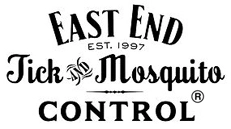When it comes to bugs, not all creepy-crawly critters are created equally. Some bugs are insects, and some are not. Insects are small, six-legged animals, often with wings. Ticks may be small, and some may have six legs when they’re young, but ticks aren’t insects. They’re arachnids and share more characteristics with spiders than ants, flies, beetles, and other insects.
Are Ticks Related To Spiders?
Ticks are more closely related to spiders than they are to insects. Like spiders, they are a part of the arachnid family, along with mites and scorpions. Both spiders and adult ticks have eight legs and lack antennae and wings. Can ticks spin webs? Unlike their spider cousins, ticks are opportunistic predators, waiting for their prey to wander close enough to latch onto.
What Is The Difference Between A Tick And A Spider?
Both spiders and ticks are arachnids, but ticks aren’t spiders; rather. Ticks are a mite species, and mites are tiny, primarily parasitic pests that often cause itchy bites that can transmit various diseases.
Spiders and ticks are built differently. Both are arthropods– invertebrates with external skeletons and jointed legs, but spiders have segmented bodies while ticks do not, and Spiders have a separate cephalothorax and abdomen. Ticks have small, flat, unsegmented bodies that enable them to attach easily to a host.
These arachnid cousins have very different diets as well. Most spiders consume insects, but some will eat nectar, pollen, seeds, leaves, web silk, or dead arthropods. Some even eat their exoskeleton after shedding it! Larger spider species may consume small lizards, birds, bats, or fish. Humans, pets, and livestock are only part of the spider diet in monster movies, and they do not seek out humans as dietary staples.
On the other hand, ticks feed on the blood of mammals – people, pets, wild animals – and livestock, as well as on birds, reptiles, and amphibians. They are parasites that latch onto their host with their mouthparts, feasting on a blood meal.
Tick Bites vs. Spider Bites
Unlike ticks, spiders rarely transmit infectious diseases, and their bites are usually harmless. The exceptions are black widow and brown recluse spider bites that transmit toxic venom, causing pain, flu-like symptoms, skin lesions, and neurotoxicity.
Ticks, on the other hand, are a vector of multiple diseases. It’s estimated that more than half the ticks on Long Island carry Lyme disease. This bacterial disease is transmitted to humans through the bite of the black-legged tick, causing flu-like symptoms and a distinctive bullseye rash. East End residents are at risk of tick-borne diseases, including anaplasmosis, babesiosis, ehrlichiosis, tularemia, and Rocky Mountain spotted fever, so closely monitor the results of any tick encounters.
Call East End Tick & Mosquito Control® For Peace Of Mind
East End Tick & Mosquito Control® is Eastern Suffolk County’s most-experienced tick control company, providing the East End with effective tick extermination treatments since 1997. Protect your family from disease-carrying ticks year-round by requesting a free estimate now or by calling our Southampton office at (631) 287-9700, our East Hampton office at (631) 324-9700, or our Southold office at (631) 765-9700.


